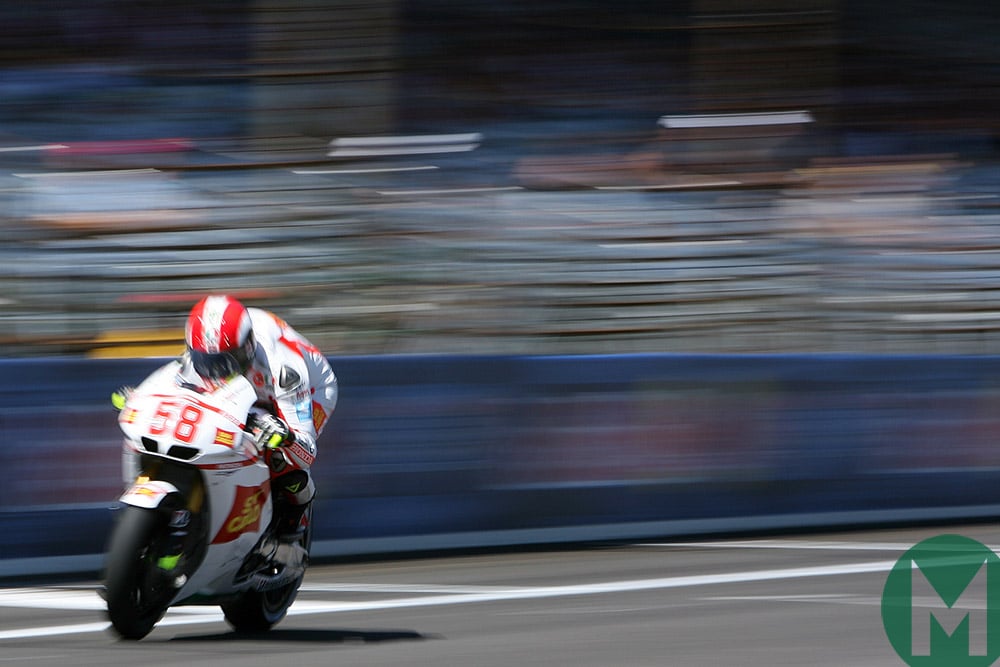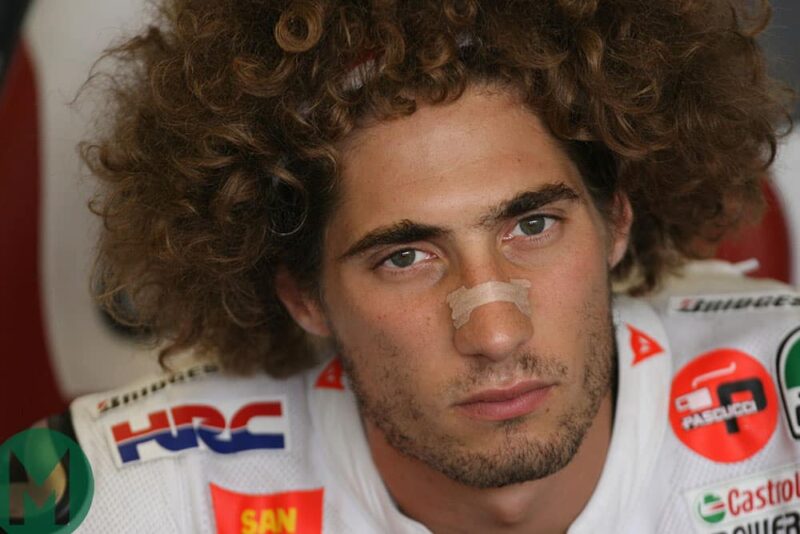Marco Simoncelli: Unavoidable tragedy?

Motorsport Images
The crash that claimed Marco Simoncelli’s life at October’s Malaysian motorcycle GP was very similar to the accident that killed Shoya Tomizawa during last year’s San Marino Moto2 race: the rider loses control, falls down and is struck by following riders. Incidents of the same kind also claimed the life of American Peter Lenz in a support race during last year’s Indianapolis GP and Briton Craig Jones in a World Supersport event at Brands Hatch in 2008.
Investigations into the horrific Sepang accident are trying to establish what can be done to improve rider protection in such situations. But the general consensus within the paddock seems to be that it was one of those accidents from which there can be little chance of survival. Even more so than car racing, motorcycle racing can never be entirely safe.
“It sounds bad, but we think nothing could have been done to avoid the tragic outcome,” said Franco Uncini, the 1982 500 World Champion who is now MotoGP safety officer. “Nevertheless, the FIM (Fédération Internationale de Motocyclisme) will look at his helmet and leathers to see what can be learned. All the companies are working very hard with new technology like airbags in the leathers, but the rider needs to be able to move around the bike, so there’s a limit to what can be done.”
Simoncelli’s crash should have been a harmless front-end lose that sent him sliding to the outside of the track, out of harm’s way. It was an everyday accident with a freak outcome.
“The FIM needs to work on this. They can’t just say nothing could have been done.”
The crash started when he lost the rear and then the front as he exited Sepang’s 80mph Turn 11. On this particular occasion the tyres kept gripping on their very edge, continuing the machine’s clockwise arc that fatefully brought him back onto the racing line, right in front of Colin Edwards and Valentino Rossi.
Some people have suggested that Simoncelli’s mistake was to keep hold of his Honda, instead of letting go and getting out of the danger zone. The Italian almost certainly did try to regain control, but officials who have examined footage believe the crucial factor was that the tyres never lifted off the Tarmac, possibly because the bike was still propped up on his right leg. Effectively Simoncelli was trapped and couldn’t push the machine away, so he was an unwilling passenger as it arced across the track.

Simoncelli died of injuries sustained in a crash at Sepang, Malaysia 2010
Motorsport Images
There was nothing that Edwards and Rossi could have done to avoid him. Both made superhuman efforts to miss the fallen bike and rider, for their own good as much for Simoncelli’s, but making a radical change of direction while taking a corner at the limit is next to impossible. Edwards sustained a dislocated left shoulder when he crashed as a result of the impact, Rossi somehow stayed on board. Simoncelli stood no chance. As he slid across the track he was hit in the back and neck with the full force of two bikes and riders travelling at about 80mph. The 24-year-old died instantly from cardiac arrest and massive head, neck and chest trauma.
His AGV helmet was wrenched off in the accident, probably by the front end of Rossi’s Ducati. The impact was such that the strap broke at its mounting point. “Helmet straps must have a minimum breaking strain of 750 kilos, which is an enormous load, but you have to consider what the force of two bikes and riders travelling at that speed would have been,” added Uncini.
Others insist that Simoncelli’s helmet should not have come off and have called for MotoGP to introduce its own stringent helmet rules. Currently, helmets used in motorcycle racing only need to conform to general helmet standards in Europe, Japan or the USA.
“Under no circumstances should a helmet come off a rider’s head,” said Ferry Brouwer, recently retired after two decades in the helmet industry. “There needs to be more stringent tests for chin straps and a specific standard for racing helmets. The FIM needs to work on this just like the FIA has done in car racing. They can’t just say nothing could have been done.”

